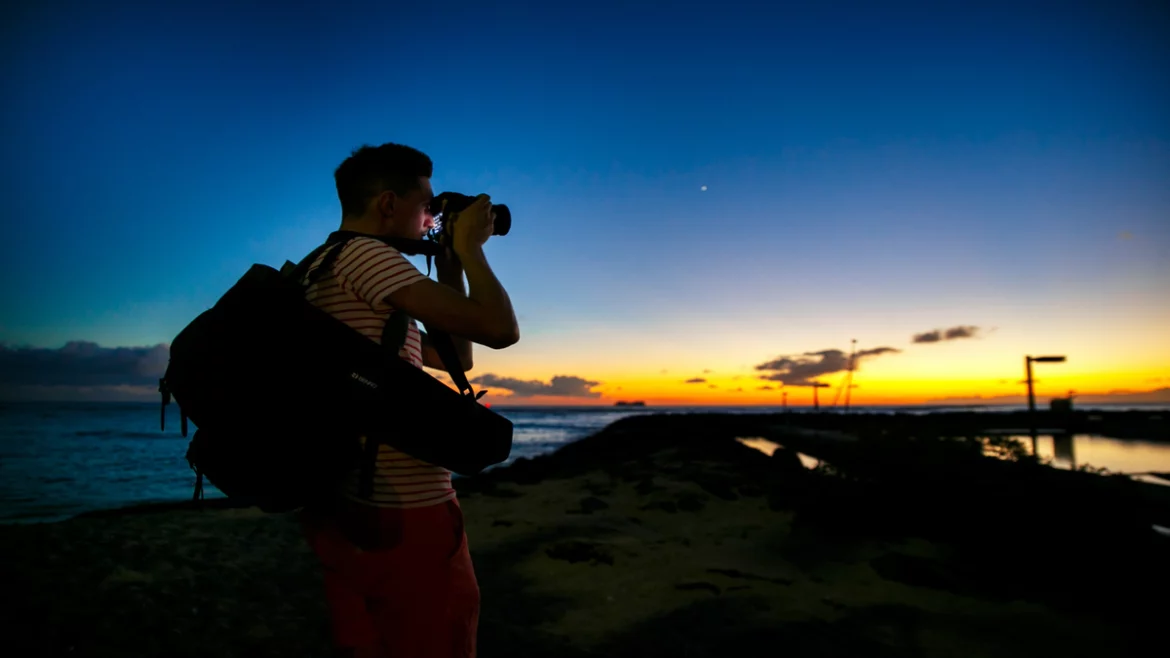One major issue that photographers face regularly is instantly resolved by night photography. This issue arises when one witnesses commonplace scenes that lack intrigue. A daytime photo of a structure or a typical street scene might be boring. Seeing pictures taken in the middle of the day is nothing new to us.
So, let’s quickly review the fundamentals of night photography for beginners. We’ll review your needed equipment, exposure techniques, night vision, exciting subjects, and post-processing advice.
Things to Pack for Night Photography
It will take a few additional pieces of equipment. You only need a tripod aside from your regular camera and lens. Because of the darkness, your camera must have a long shutter speed to capture enough light for an accurate exposure. Thus, you must be able to hold your camera steadily; the finest tool for this is a tripod.
An additional helpful tool for maintaining camera stability is a remote shutter release. While not essential, you might want to have the following extras on hand for your nighttime photography:
- A Torch: This will be useful in a lot of situations. If you are unfamiliar with your camera’s controls, it will assist you in discovering them. It will help you with tripod setup, strap handling, and other attachments. And last, a flashlight will aid in discovering items within your camera bag. Simply always have a tiny one on hand or a light.
- Hood for Lenses: Neon and street lights are only two examples of bright lights that will shine at you at night. The use of a lens hood will reduce the number of flares.
- Additional Batteries: The lengthy exposures you take during the night can unpredictably deplete the battery in your camera. Additionally, you might be using Live View, which uses them much more quickly. Thus, extra batteries are always necessary for nighttime photography.
Exposures in Nighttime Photography
The exposure values you must utilize are the main distinction between photography during the day and shooting at night. Everything changes as it becomes dark. But don’t worry. Getting the right exposure is usually relatively easy to achieve after your camera is mounted on a tripod.
-
Shutter Speed
You will usually employ shutter speeds of a tiny fraction of a second during the day. But at night, the camera will employ shutter speeds that are sometimes noticeably longer than one second. Consider it this way: the camera requires more time to gather light for a correct exposure because it is dark.
-
Aperture
The aperture is the lens opening through which light enters the camera. The aperture’s size controls the depth of field and the amount of light entering the camera at a particular shutter speed.
-
ISO
The ISO, or third exposure control, gauges how sensitive your digital sensor is to light. You can utilize a narrower aperture or a shorter shutter speed with higher ISO values since they increase the sensitivity of your digital sensor to light.
Choosing a Subject for Your Nighttime Photos
You need to choose a suitable topic for night photography now that you have the necessary equipment and understand how to expose your images. Allow us to present a few subjects we enjoy taking nighttime photos of. These should provide you with some ideas that you can develop further.
-
The Night Sky
All you need for a fantastic shot when out in the countryside is a clear night. The greatest nights are clear and moonless. Better still, if you catch a glimpse of the Milky Way.
-
Museums and Public Buildings
Buildings with good lighting are a natural choice for a nighttime scene. Here, you practically can’t go wrong. Even though the idea is simple, a well-executed implementation can produce fantastic results. This can also serve as a foundation for your nighttime photography. As you wait for your images to expose, you will come up with more ideas.
-
Bridges
Every town or city appears to have a bridge. Even though it may not be the Golden Gate Bridge, the topic is still intriguing because there will probably be a bridge, and it will be well-lit at night.
-
Car Light Trails
Adding streaking light trails from moving cars to your nighttime shots is fun. These occur when you have your shutter open and a car or other vehicle passes through the picture. The camera picks up the lights, but because the car was driving through the entire frame when the shutter was open, they appear in the photo as light streaks.
Final Words
Night photography is an excellent method to capture unique and captivating images. Additionally, since it is after work hours and most people will be asleep, it is a wonderful time to shoot. With any luck, this guide will get you started on night photography.


